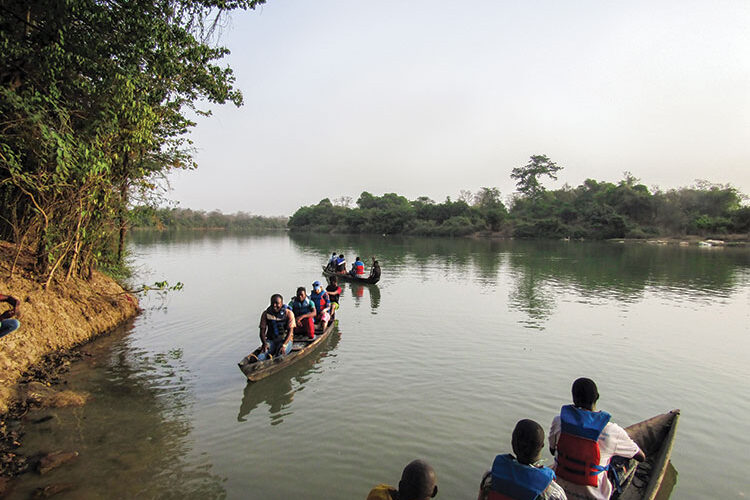Becca (Ashley) Asare ’97 is helping to support African farmers and protect the environment.
The next time you bite into a Hershey’s chocolate bar, consider this: Chances are, the cocoa beans used to make it were grown and harvested by one of the 800,000 cocoa farmers in the West African country of Ghana.
Ghana is the second-largest producer of cocoa beans in the world, and the crop has become an annual $2 billion industry there — but it sometimes comes at the expense of the country’s high forests. That’s because farmers long believed that the forest canopy made their cocoa trees less productive. For decades, deforestation has increased alongside cocoa yields — and that, in turn, has diminished regional biodiversity as well as some of the forest ecosystem’s key benefits, such as carbon storage.
But linking tree cover to low cocoa productivity is a mistake, says Becca (Ashley) Asare ’97, director of programs and research at the Nature Conservation Research Centre (NCRC) in Accra, Ghana’s coastal capital city. Asare has spent more than 15 years studying the complex interface of agriculture, forests, and farmers’ well-being in many African countries. Her research has shown that, contrary to popular belief, proximity to forests and tree cover on farms (along with proper soil management and pollination) actually bolsters cocoa crop yield. At NCRC, she’s using such research to promote climate-smart cocoa production at landscape scales.
To do so, Asare relies on one of NCRC’s core principles: community-based conservation — which is both rooted in local culture and economically viable. “You can’t just do conservation because it feels good,” she says. “There has to be a plan that makes life better for the people involved.”
At NCRC, that approach takes the form of community resource management areas (CREMAs). CREMAs have now been established on approximately 500,000 hectares in the south, where cocoa farming is widespread, to encourage forest maintenance in the midst of the farming landscape. Led by Asare, this effort has produced significant results — including the 2017 development and adoption of the Ghana Cocoa Forest REDD+ Program (GCFRP), the first commodity-based emissions reduction program on the continent. (REDD+ refers to efforts to reduce emissions from deforestation and forest degradation in developing countries.) Under this plan, as a member of the World Bank’s Carbon Fund, Ghana stands to receive millions of dollars in return for reduced deforestation, dollars that will then be funneled back to the CREMA communities. Months after the World Bank signed on, the global cocoa industry as a whole committed to a no-deforestation supply chain.
Arriving at the GCFRP required that Asare lead diverse — and divergent — stakeholders to a consensus. To do so, she asked herself the question that has always driven her research: Why do people do the things they do? “If we can understand what drives people’s behaviors and decision making,” she says, “we are in a much better position to effect change.” She also ensured that NCRC’s research resonated with everybody — from farmers to government agents to chocolate execs. “You can be as academic as you like, but let’s make sure the questions we’re asking have relevance on the ground and can help to drive and inform the issues we’re facing,” she says.
Today Asare applies her knowledge of research, policy, and practice to the oversight of two Hotspot Intervention Areas (HIAs) in Ghana, the country she’s called home since 2005. On HIAs, cocoa communities perform land-use planning and management and explore additional revenue streams; NCRC colleagues monitor biodiversity and economic and social consequences; and companies including Hershey support farmers in climate-smart practices. Though creating change in West Africa is not a speedy process, Asare says, you can have real impact: “It takes patience. It takes commitment. It takes a thousand small steps. But if you just start walking, you’ll get there.”

